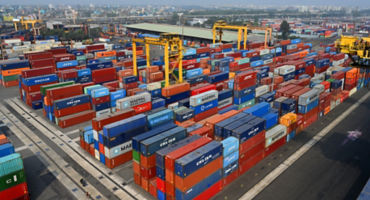Weighing the macro impact of higher immigration
I see a number of key takeaways for growth, interest rates, and the labor force:
Growth and interest rates — By the CBO’s estimates, the demand for goods and services driven by the addition of seven million people to the US population could add 0.2% to the nation’s economic growth rate.1 A higher potential growth rate would likely mean the US economy could sustain higher interest rates for longer. It would also allow the Federal Reserve to factor a higher “neutral interest rate” — the theoretical rate at which the economy can grow sustainably without driving inflation higher — into its policy decisions.
Labor supply — An improvement in US labor supply last year, driven in part by the surge in immigration, was a critical factor in slowing wage growth and reining in inflation. From a cyclical standpoint, if the CBO’s higher immigration estimates prove to be realistic, it would suggest that the US economy could sustain a faster pace of monthly employment gains without an unwelcome increase in inflation. A recent study by the Brookings Institution estimates that this run rate could be 160,000 – 200,000 for 2024 — as much as two times the total of 100,000 predicted by many experts.2
It’s worth remembering that while immigration results in immediate population gains, the labor supply grows with a lag, given the time needed for work permits to be issued. Once immigrants have entered the labor market, research from the Bureau of Labor Statistics shows that their labor force participation rates tend to be higher than those for the native-born population, thus serving as a positive growth factor. Irrespective of current differences in labor force projections across various sources, most experts agree that immigration will drive a large proportion of US labor force growth and, therefore, immigration policies will need to be reconsidered. As I’ve written previously, shifting demographics will prompt governments around the world to focus more on labor and investment policies in years to come, with each nation having to address unique challenges — whether to focus on higher- or lower-skilled workers, for example.
Longer term, a larger labor force could also help postpone the date at which Social Security, Medicare, and Medicaid face insolvency.
Challenges at the state level — On the negative side, many states are experiencing higher education, health care, and infrastructure costs as a result of the increase in immigration, making it a tough lift for the impacted parts of the country.
This, of course, helps explain in part why immigration is a top political issue in this election year. And the election results will, in turn, be a major driver of future outcomes. Again, the immigration and economic picture I’ve painted here seem plausible if we see a win for President Biden and the Democratic party. But if former President Trump returns to power and carries out his intention to aggressively restrict immigration and deport undocumented workers, it raises the risk of an abrupt negative labor supply shock, which would be inflationary.














